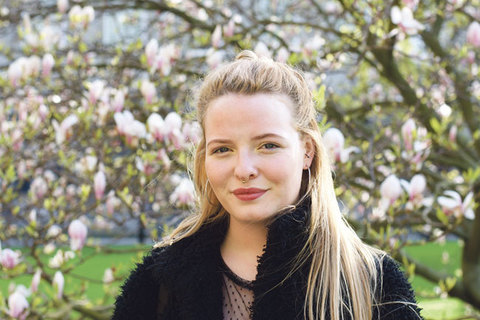
Trinity Ball is the one event that sees more hype than anything else on the college calendar. For one night only, Trinity’s campus takes on a new life as students dance into the early hours of the morning, leaving the stress of exams behind them in the library. Walking into the ball for the first time as a first-year student, I, like many others, expected to see the whole campus lit up and decorated much like any other music festival would be. Sadly though, aside from the projections on the West Front, there was nothing. Fourth-year art history student Grace O’Boyle felt that a crucial element of the festival atmosphere was being overlooked, and saw an opportunity to seize the creativity of Trinity students to enhance the experience of the ball.
While students have great opportunities to engage with the arts in societies such as Trinity Arts Festival (TAF), Trinity Visual Arts Society (Vis Arts) and Trinity Arts Workshop (TAW), the visual dimension of wider college events is still lacking, and students are not presented with any opportunities to create works for events on such a large scale. Through her own personal interest in art, O’Boyle became aware of the wealth of talented students in the College, finding that Trinity students had a hand in the decorations for major music festivals in Ireland. With this in mind, she began to wonder why our own festival was still so bare, commenting “it doesn’t make any sense that we don’t have visuals”.
Speaking to The University Times, O’Boyle exudes enthusiasm for the project. The idea was born at the beginning of last year when she decided to run for the position of entertainments officer in 2016’s Trinity College Dublin Students’ Union’s (TCDSU) sabbatical elections, with one of her main manifesto points being the introduction of a stronger visual presence at Trinity Ents events. After the elections, O’Boyle instead took up the position of Nights Officer, attempting to incorporate installations through the role, but realised that a separate installations role was needed. After she established, ran for and won the position of Installations Officer, O’Boyle then established a sub-committee of six others so that the ball could finally get rolling.
The submissions were open to all students, and a total of 39 submissions were made before the committee settled on a final 10, which includes one piece from the committee themselves. The theme for the display is “light”, the committee selecting works that were rife with light and colour so that they would be “as poignant as possible” amongst the darkness and crowds of revellers. Hearing about some of the installations it sounds more like something out of a Tim Burton movie than Trinity Ball. Scattered in the spaces between the Arts Block and Front Square, patrons of the ball will find illuminated umbrellas hanging in the air, glow-in-the-dark teepee huts, chandeliers and an “interactive bicycle wheel”.
Attempting to transform the aesthetics of Trinity Ball is no mean feat, and as the project is only in its first year, the committee have encountered many obstacles: “We’re all just learning as we go, it’s all trial and error”, O’Boyle reflects. One of the main issues was getting through the bureaucracy of security and health and safety in the College. For this reason the committee had to limit the interactivity of the installations to avoid any hazard: “We are just looking at it being aesthetic and something that contributes to the environment as opposed to something that you can touch or interact with”, O’Boyle explains. Once all of the relevant permissions had been granted, the issue of funding then presented itself. However, O’Boyle insisted that when choosing the installations “the last thing we looked at was money” saying that decisions were made on the basis of feasibility and permissions, finding ways to fund the artworks as they go. In the decision-making phase, the committee also had to be mindful of the nature of the event and so the decision was made not to feature performance art installations for this reason. O’Boyle noted how “it killed me to say no … some of them were really interactive, so interactive that I felt like drunken people would take away from the nice interactive environment … I feel like some people would abuse and take the mick”. However, O’Boyle still felt that there could be a platform for the pieces to be performed in the future at different events.
Each installation will be made by a team of between two and five people. Students from all disciplines are represented, including engineering, science and occupational therapy: “There are so many talented people in this college that just need a platform to get involved … so many people that are just really creative and could just apply themselves to making an installation if they just had some guidance.”
The project is starting small, but Grace is optimistic that it will grow over the coming years, both in terms of involvement, numbers of installations and also in terms of funding. For now, the focus is simply to introduce a visual presence into aspects of college social life and to give student artists a new platform to display their work.






